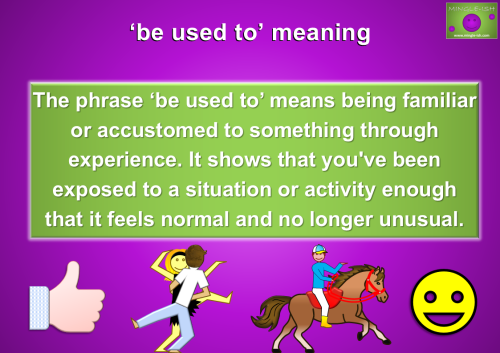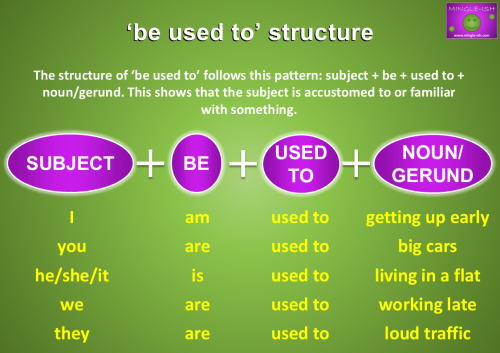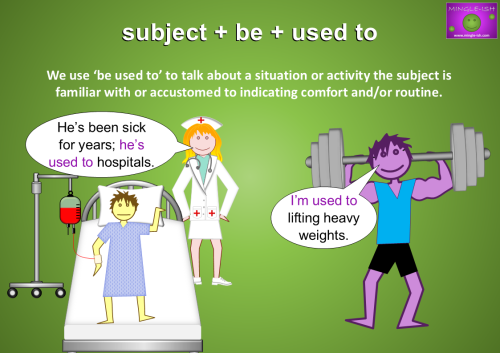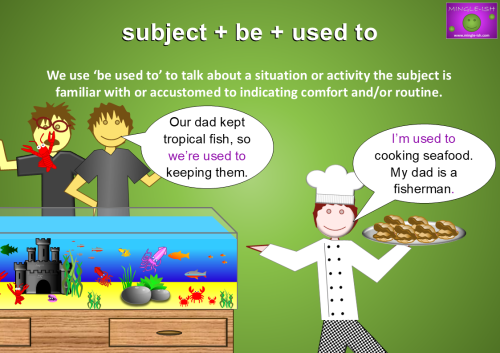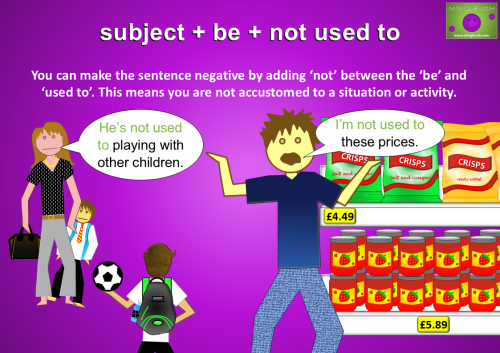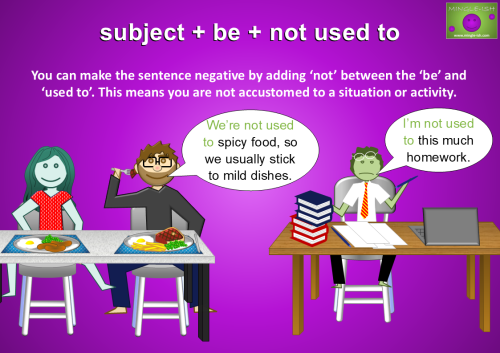Contents
Welcome to our guide on “be used to.” Here, you’ll learn how to use this important English phrase with clear explanations and examples. Perfect for English learners looking to improve their grammar skills and fluency!
‘be used to’ meaning
“Be used to” expresses familiarity or comfort with a situation or activity. It indicates that something is a regular part of your life, making it easier to handle. For example, if you say, “I am used to waking up early,” it means waking up early is a normal routine for you. This phrase is essential for discussing habits and routines in English.
‘be used to’ structure
The phrase “Be Used To” follows a specific structure: it consists of the verb “to be” (am, is, are) + “used to” + a noun or gerund (-ing form). For example, “I am used to studying late at night.” This structure helps convey familiarity or comfort with an action or situation, making it an essential part of everyday English communication.
The structure (in a little more detail) goes like this:
We start with the subject (a person or you can use the subject pronoun), then we add the corresponding ‘be’ verb:
- I am
- You are (singular)
- He/she/it is
- We are
- You are (plural)
- They are.
Then we add ‘used to’ and finally we add the action (verb).
For example:
- She is used to working long hours in her job.
- They are used to the cold weather after living in Canada for several years.
- I am used to waking up early for my morning workouts.
**SPEAKING PRACTICE: Practice talking about some activities you are accustomed to.
examples
Check out these everyday examples of “be used to” to see how it works in real life. They’ll help you get a feel for expressing comfort and familiarity with different situations!
- He’s been sick for years; he’s used to hospitals.
- I’m used to lifting heavy weights.
- My dad kept tropical fish, so we’re used to keeping them.
- I’m used to cooking seafood. My dad is a fisherman.
**SPEAKING PRACTICE: Practice talking about some activities you are accustomed to.
‘be + not used to’ (negation) meaning
You can make the sentence negative by adding ‘not’ between ‘be’ and ‘used’. For example:
I am not used to hot weather. England is not very sunny or hot. When it is hot, I suffer, I get burnt, I can’t sleep etc. I am not accustomed to the sun.
examples
When we want to express that something is unfamiliar or uncomfortable, we use “be + not used to.” Check out these examples:
- I’m not used to waking up so early.
- Lucy is not used to spicy food.
- My parents are not used to living in a big city.
- My teenage son is not used to working long hours.
- We’re not used to this cold weather.
**SPEAKING PRACTICE: Practice talking about some activities you are not accustomed to.
understanding ‘be used to’ is key to talking about familiarity and comfort in English. Now that you’ve got the hang of it, it’s time to explore the related structures ‘used to‘ and ‘get used to.’ These will help you express past habits and the process of adapting to new situations. Keep practising, and soon you’ll be confidently using all three in your everyday conversations!
